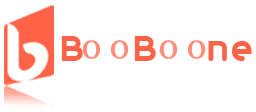Table of Contents
How often have you caught yourself thinking, “Wouldn’t it be easier to hand the project over to AI instead of paying a team of developers?” It’s a tempting thought, especially in the age of AI — but the reality is far more complex.
In this article, we’ll explore what AI can actually do in software development, where it still falls short compared to humans, and what conclusions companies should draw before entrusting a project to artificial intelligence.
When AI Tried to Play Software Engineer
Recently, a client approached SCAND with a unique experiment in mind. They wanted to test whether artificial intelligence could independently develop a small web application and decided to use Cursor for the task. The application’s purpose was simple — fetch statistics from an external API and display them in a table.
The initial result looked promising: AI created a functioning project that included both client- and server-side components, implemented the basic logic for retrieving data, and even designed the interface. The table correctly displayed the statistics, and the overall code structure appeared decent at first glance.
However, upon closer inspection, it became clear that the solution was overengineered. Instead of directly connecting to the API and displaying the data in the browser, AI built a full backend server that proxied requests, stored intermediate data, and required separate deployment.
For such a simple task, this was unnecessary — it complicated the infrastructure, added extra setup steps, and lengthened the integration process.
Moreover, AI did not account for error handling, request optimization, or integration with the client’s existing systems. This meant developers had to step in and redo parts of the solution.
The Limits of Generative AI in Coding and Software Development
Generative AI has already proven that it can quickly produce working code, but in practice, its capabilities in real-world software development often turn out to be limited. Here are the key issues we regularly encounter when reviewing AI‑generated projects:

- Lack of understanding of business logic and architecture. AI cannot see the full picture of a project, its goals, and its constraints. As a result, the solutions it produces may be technically correct but completely misaligned with the actual business needs.
- Inability to make architectural trade‑offs. An experienced software engineer evaluates the balance between development speed, implementation cost, and ease of maintenance. AI, on the other hand, cannot weigh these factors and tends to choose a standard or even unnecessarily complex approach.
- Overengineering. Generating unnecessary layers, modules, and services is a common mistake. For example, a simple application may end up with an extra backend that requires separate deployment and maintenance.
- Ignoring the context of existing systems. AI does not take into account how new code will integrate with the current infrastructure, which can lead to incompatibilities or additional costs for rework.
- Code ≠ product. Artificial intelligence can write fragments of code, but it does not deliver complete solutions that take into account UX, security, scalability, and long-term support.
- Does not always fully understand the task. To get the desired result, prompts often need to be clarified or rewritten in more detail — sometimes stretching to a full page. This slows down the process and forces the developer to spend time refining the request instead of moving directly to effective implementation.
Ultimately, despite the growing role of AI in software development, without the involvement of experienced developers, such projects risk becoming a source of technical debt and unnecessary costs.
Why Human Software Developers Still Beat AI Agents
Yes, generative AI and agentic AI can write code today — sometimes even fairly good code. But there are still some things that artificial intelligence can’t replace in a professional software developer’s workflow..
First, it’s understanding the business context. A human doesn’t just write a program — they know why and for whom it is being created. AI sees a set of instructions; a developer sees the real task and understands how it fits into the company’s goals.
Second comes the ability to make informed decisions — whether to reuse existing code or build something from scratch. A human weighs deadlines, costs, and risks. AI, in turn, often follows a template without taking hidden costs into account.
Third, it’s architectural flexibility. An experienced programmer can feel when a project is starting to “grow” unnecessary layers and knows when it’s the right time to stop. AI, on the other hand, often creates excessive structures simply because that’s what it has seen in its training examples.
Fourth comes thinking about the product’s future. Scalability, maintainability, and handling edge cases are built into a developer’s mindset. AI is not yet capable of anticipating such nuances.
And finally, communication. A true software engineer works with the client, clarifies requirements, and adjusts the approach as the project evolves. AI is not capable of real dialogue or a subtle understanding of human priorities.
Therefore, in today’s software development landscape, artificial intelligence is still a tool — not a strategist. And in the foreseeable future, the human role in creating high‑quality software will remain essential.
The table below compares how humans and AI handle key aspects of development, and why the human role in the process is still important.
| Criterion | Software Developer | Generative AI |
| Understanding business context | Analyzes project goals, target audience, and long-term objectives | Sees only the given prompt, without understanding the bigger picture |
| Making architectural decisions | Balances speed, cost, simplicity, and maintainability | Follows a template without considering hidden costs |
| Architecture optimization | Avoids unnecessary modules and simplifies when possible | Prone to overengineering, creating extra layers |
| Working with existing systems | Considers integration with current infrastructure | May generate incompatible solutions |
| Foresight | Plans for scalability, error handling, and edge cases | Often ignores non‑standard scenarios |
| Collaboration | Engages with the client, clarifies requirements, offers alternatives | Understands the request in a limited way, requires precise and detailed prompts |
| Flexibility in process | Adapts to changing requirements on the fly | Requires code regeneration or a new prompt |
| Speed of code generation | Focuses on correctness and stability over raw speed | Generates code instantly, but it’s not always useful or correct |
| Final deliverable | Ready‑to‑use product | A set of code requiring review and refinement |
Human Developers vs AI in Software Development
Where AI Coding Tools and Agentic AI Can Help Software Engineers
Despite its limitations, AI tools have some strengths that make them valuable assistants for software engineers. According to Statista (2024), 81% of developers worldwide reported increased productivity when using AI, and more than half noted improved work efficiency.

Benefits of using AI in the development workflow, Statista
In day‑to‑day development, AI can significantly speed up routine tasks and simplify supporting processes, such as:
- Generating boilerplate code. Generative AI can produce repetitive code structures in seconds, saving time and allowing developers to focus on business logic.
- Creating simple components. AI can quickly build buttons, forms, tables, and other UI elements that can later be adapted to the project’s needs.
- Converting formats. Artificial intelligence can easily transform data and code — from JSON to YAML or from TypeScript to JavaScript, and back.
- Refactoring. AI can suggest code improvements, simplify structures, and remove duplicates.
- Rapid prototyping. AI can build a basic version of functionality to test ideas or demonstrate concepts to a client.
However, even in these use cases, AI remains just a tool. The final version of the code should always go through human review and integration to ensure it meets architectural requirements, quality standards, and the project’s business context.

SCAND’s Approach — AI + Human Expertise in the Age of AI
At SCAND, we see artificial intelligence not as a competitor to developers, but as a tool that strengthens the team. Our projects are built on a simple principle: AI accelerates — humans guide.
We use Copilot, ChatGPT, Cursor, and other AI tools where they truly add value — for quickly creating templates, generating simple components, and testing ideas. This allows us to save hours and days on routine tasks.
But code generation is only the beginning. Every AI‑produced solution goes through the hands of our experienced developers who:
- Check the correctness and security of the code, including potential license and copyright violations, since some pieces of the suggested code may replicate fragments from open repositories.
- Optimize the architecture for the task and project specifics.
- Adapt technical solutions to the business logic and project requirements.
We also pay special attention to data protection and confidentiality:
- We do not transfer confidential data to public cloud-based AI without protection, unless the client specifically requests otherwise. In projects involving sensitive or regulated information (for example, medical or financial data), we use local AI assistants — Ollama, LM Studio, llama.cpp, and others — deployed on the client’s secure servers.
- We sign clear contracts that specify: who owns the final code, whether AI tools are allowed, and who is responsible for reviewing and fixing the code if it violates licenses or contains errors.
- We include obligations for documentation (AI usage logs indicating when exactly and which tools were used) to track the source of potential issues and ensure transparency for audits.
- We provide team training on AI best practices, including understanding the limitations of AI-generated content, licensing risks, and the importance of manual validation.
Will AI Replace Software Engineers? The Practical Reality Check
Today, artificial intelligence in software development is at the same level that calculators were in accounting a few decades ago: a tool that speeds up calculations, but does not understand why and what numbers need to be calculated.
Generative AI can already do a lot — from generating components to performing automatic refactoring. But building a software product is not just about writing code. It’s about understanding the audience, designing architecture, assessing risks, integrating with existing systems, and planning long‑term support for years ahead. And this is where the human factor remains irreplaceable.
Instead of the “AI replaces developers” scenario, we are moving toward a mixed‑team model, where AI agents become part of the workflow and developers use them as accelerators and assistants. This synergy is already reshaping the software development landscape and will continue to define it in the coming years.
The main takeaway: the age of AI does not eliminate the profession of software engineer — it transforms it, adding new tools and shifting priorities from routine coding toward architecture, integration, and strategic design.
Frequently Asked Questions (FAQs)
Can AI write an entire app?
Yes, but often without optimization, with over‑engineered architecture, and without considering long‑term maintainability.
Will AI replace frontend/backend developers?
Not yet, since most development decisions require business context, trade‑offs, and experience that AI does not possess.
What’s the biggest impact of AI-generated code?
An increased risk of technical debt, maintainability issues, and architectural misalignment — all of which can ultimately drive up the cost of rework.


